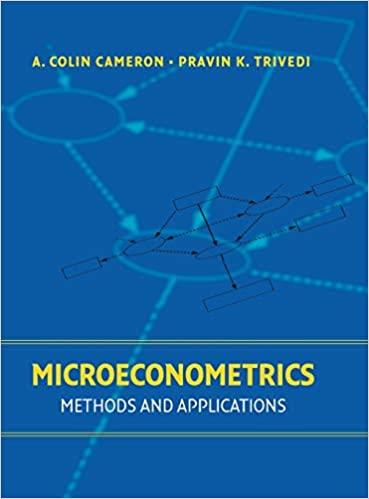Use a 50% random subsample of the wage-hours data in Section 21.3 (a) Can (beta) be directly
Question:
Use a 50% random subsample of the wage-hours data in Section 21.3
(a) Can \(\beta\) be directly interpreted as a labor supply elasticity? Explain.
(b) For the following estimators: (1) pooled OLS, (2) between, (3) within, (4) first differences, (5) random effects GLS, (6) random effects MLE give (i) \(\widehat{\beta}\) (estimated coefficient of Inwg), (ii) default standard error, and (iii) panel bootstrap standard error with 200 replications.
(c) Are the estimates of \(\beta\) similar?
(d) Is there a systematic difference between default standard errors and panelrobust standard errors?
(e) Will the pooled OLS estimator in part (b) be consistent for \(\beta\) in a fixed effects model? Will the pooled OLS estimator be consistent for \(\beta\) in a random effects model?
(f) Perform a Hausman test of the difference between the fixed and random effects (GLS) estimates of \(\beta\) in this model. Do this manually using the earlier regression output with the default standard errors. What do you conclude and which model is favored?
(g) Given the preceding evidence, do you believe that the labor supply curve is upward sloping Explain.

Step by Step Answer:

Microeconometrics Methods And Applications
ISBN: 9780521848053
1st Edition
Authors: A.Colin Cameron, Pravin K. Trivedi





